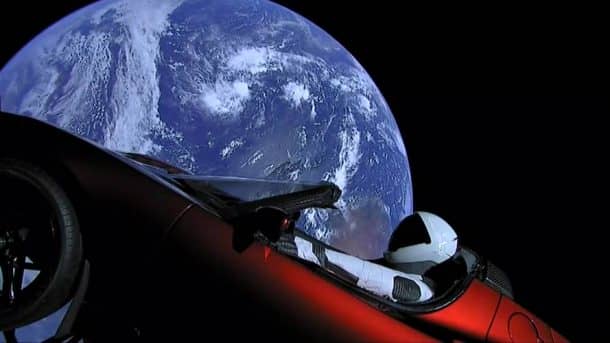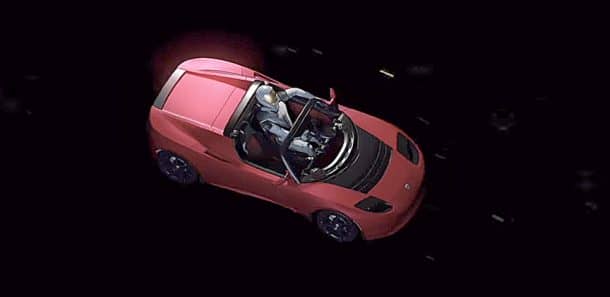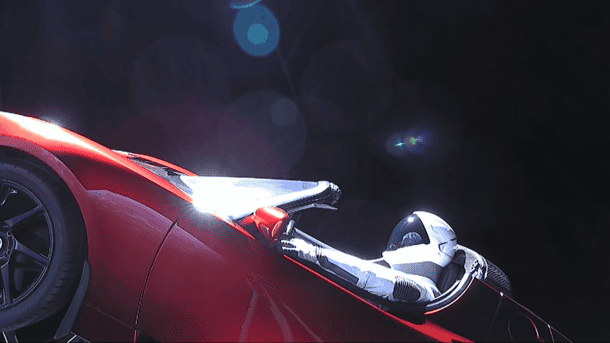With the successful Falcon Heavy launch earlier this month, Starman on the wheel of his Tesla Roadster has gotten a lot of attention. There have been hilarious memes “floating” around. SpaceX was also live streaming images from the roadster.
The Roadster is currently on its journey through deep scape towards the asteroid belt as it overshot the Mars orbit. If nothing happens to change its current orbit, it will be returning back to the same neighbourhood it was launched from in roughly two and a half years. However, we will be on the other side of the sun at the time and won’t be able to see it for a further two and a half years.
All these guesses are only estimates as the exact trajectory of the car is still unknown. Planetary Society Senior Editor Emily Lakdawalla also took to Twitter to say that the lack of traceable radio signals and unknown trajectory of the car makes it very hard to make any predictions.

Plus, there’s something called outgassing, which Ron Turner, a senior scientific advisor to NASA’s Institute for Advanced Concepts, says could also affect the car’s trajectory a little bit. “There’s air all throughout the car,” Turner says. “In the vacuum of space, any gases in the seat cushions, the doors, the glove box, and even in the space of the steering wheel wrapper, all of that gas and water vapour from Earth’s atmosphere is eventually going to come out. It doesn’t have any reason to stay there.”
When these gases do come out, they will rush into different directions and change the trajectory of the car further. Turner believes we will see the car again but is not sure about the number of years and says it could be “seven and a half, ten or eleven. It’s reasonable we’ll see it again, it just depends on what orbit it finally gets itself into.”

However, when we do see it again, it won’t be the cherry red car we remember. It’ll probably be a little weathered. “Think of it as finding an artifact, like the Titanic under the ocean,” Turner says. “It’s not gonna be in great shape, it won’t stay pristine.”
The Tesla will be worn down by two things. The first and foremost is the sandblasting of tiny dust-like particles. These are called micrometeorites and travel through space at high speeds. Turner says, “Those little motes of dust, which are mostly just fractions of grams, are going to be hitting the car at 20 kilometres per second. They’ll vaporize and scatter the paint and make nice little pits in the metal.”
The second factor affecting the Tesla Roadster is radiation. “Anything with plastic or rubber will degrade because of cosmic ray radiation, energy from cosmic rays floating around in space that tends to disrupt chemical bonds. The metal structure itself should be fine and last for hundreds of thousands of years,” says Tom Narita, an astrophysicist at the College of the Holy Cross in Massachusetts

Space is more empty than we realize and the chances of the car hitting a large asteroid are very low. “If it does by coincidence hit an asteroid, that’s the end of that,” Narita says. “But it’s my speculation that the chance of that is pretty small.”
Even though the Tesla Roadster might not be mauled by an asteroid. It will be a little beat up the next time we lay eyes on it. “Someday, maybe someone will find the relic of what appears to be a car or a hunk of metal with shredded rubber and destroyed plastic covering it,” Narita says. “But I think it’ll be more of an inert piece of space junk than anything dangerous.”
We will have to wait with bated breath for the Tesla Roadster to make its way back home.


